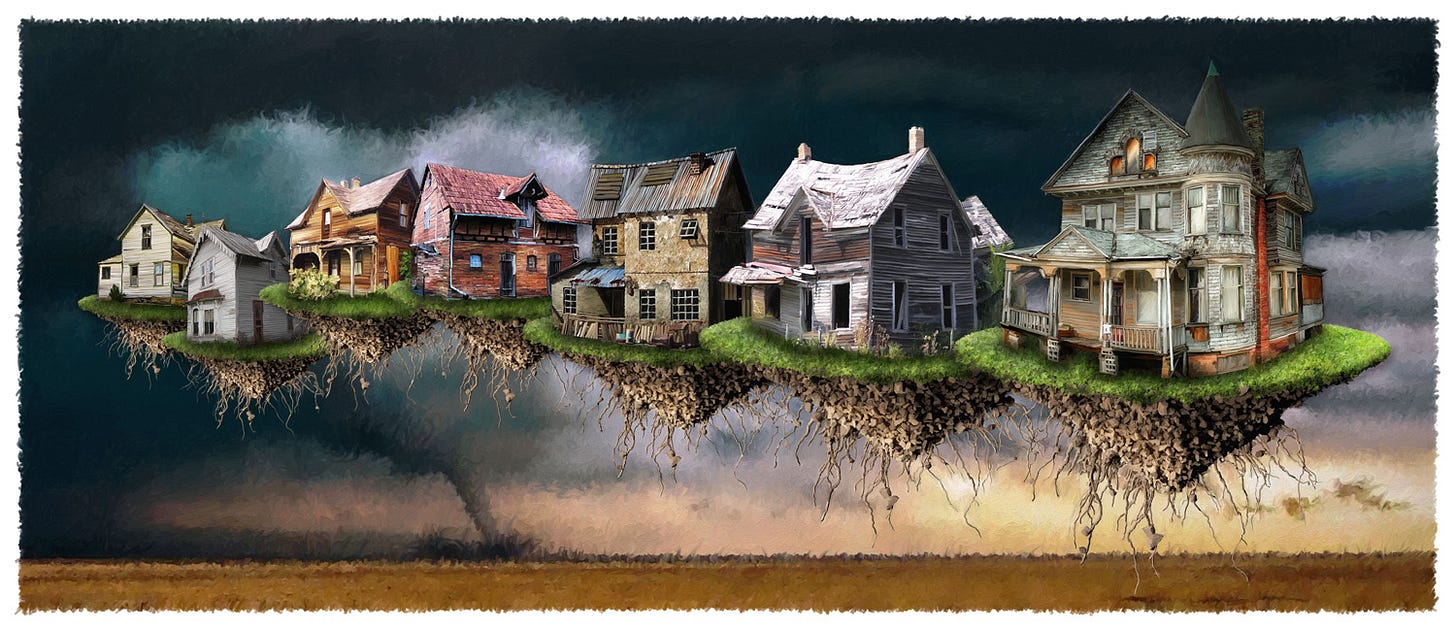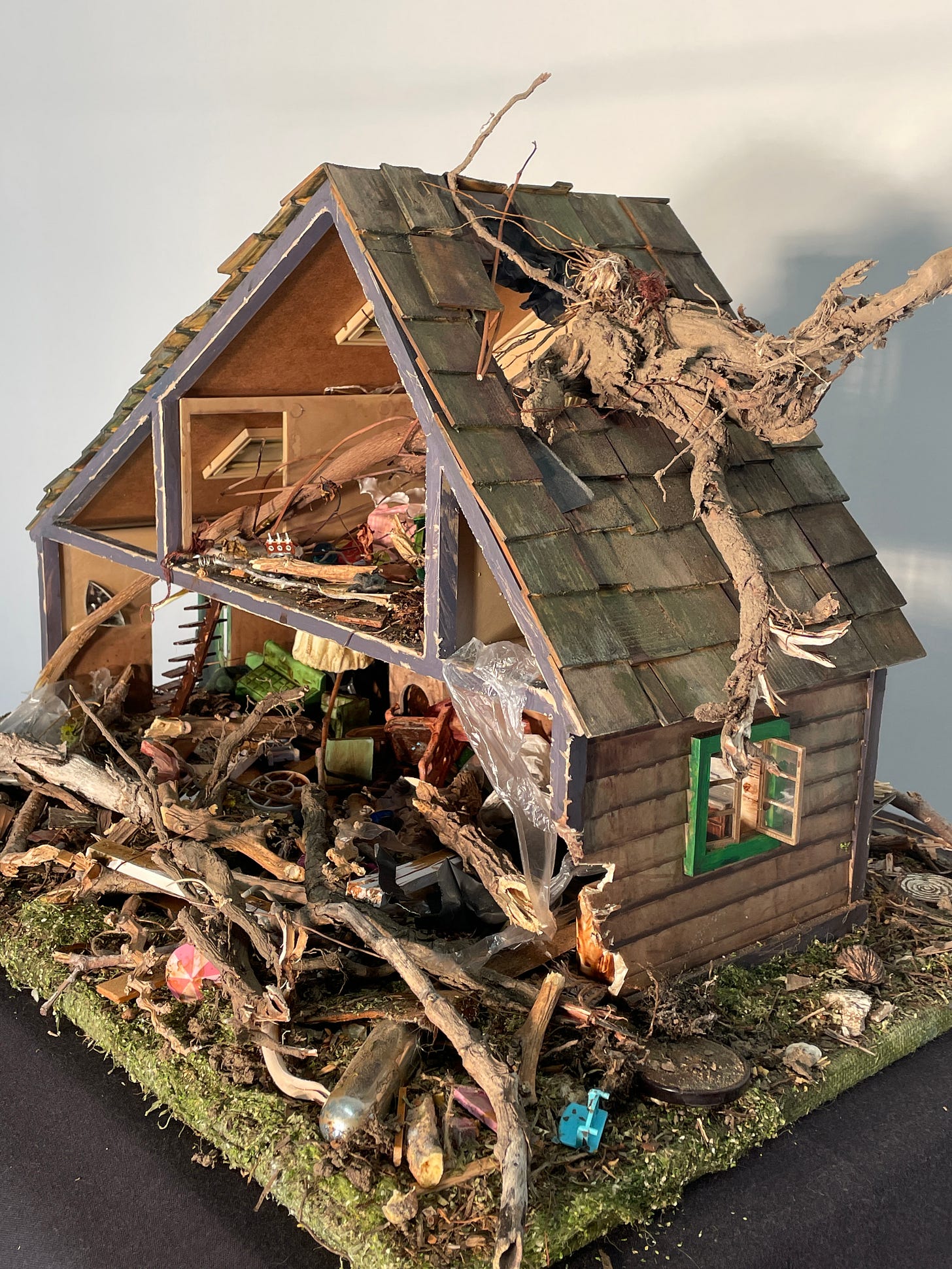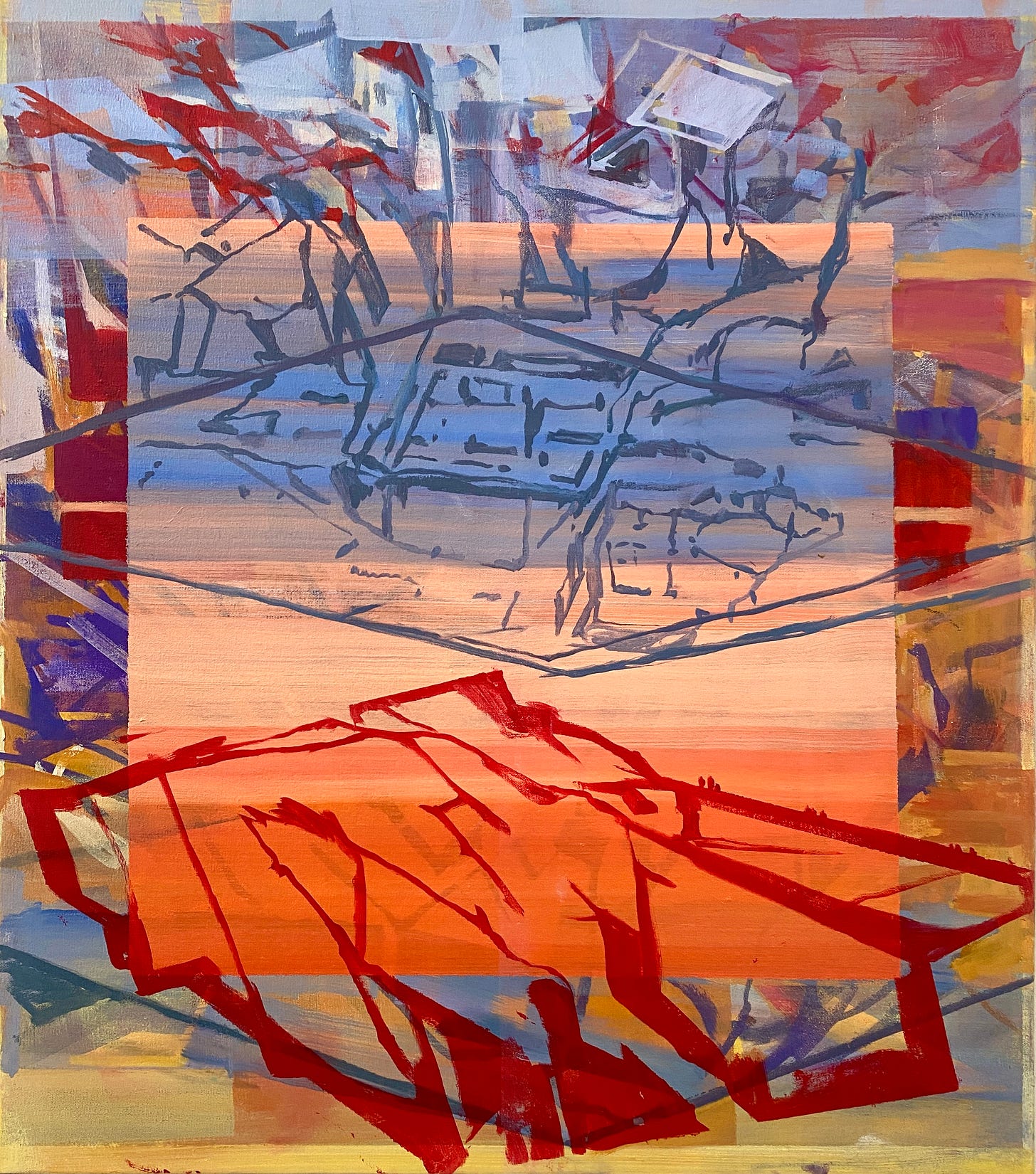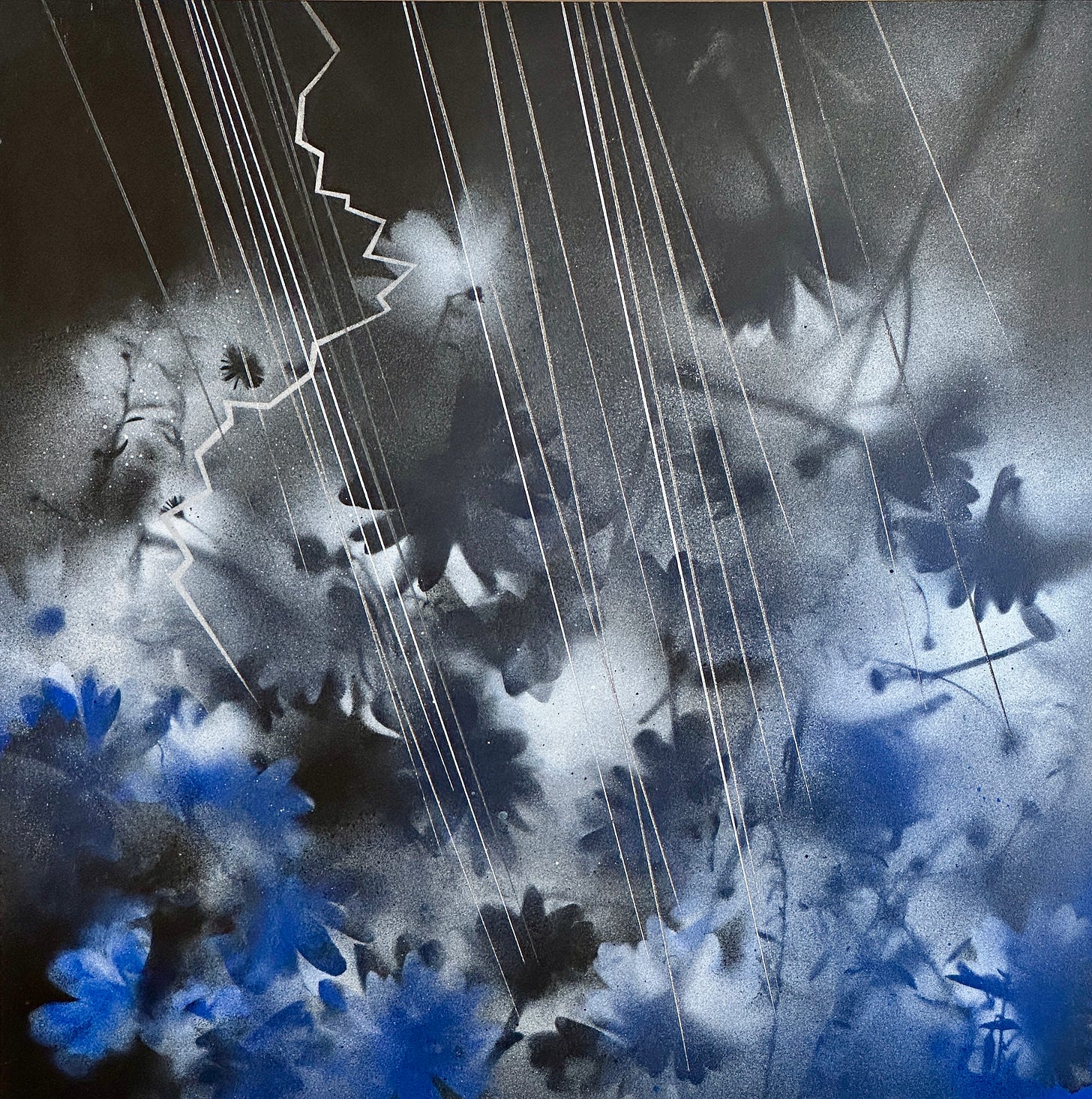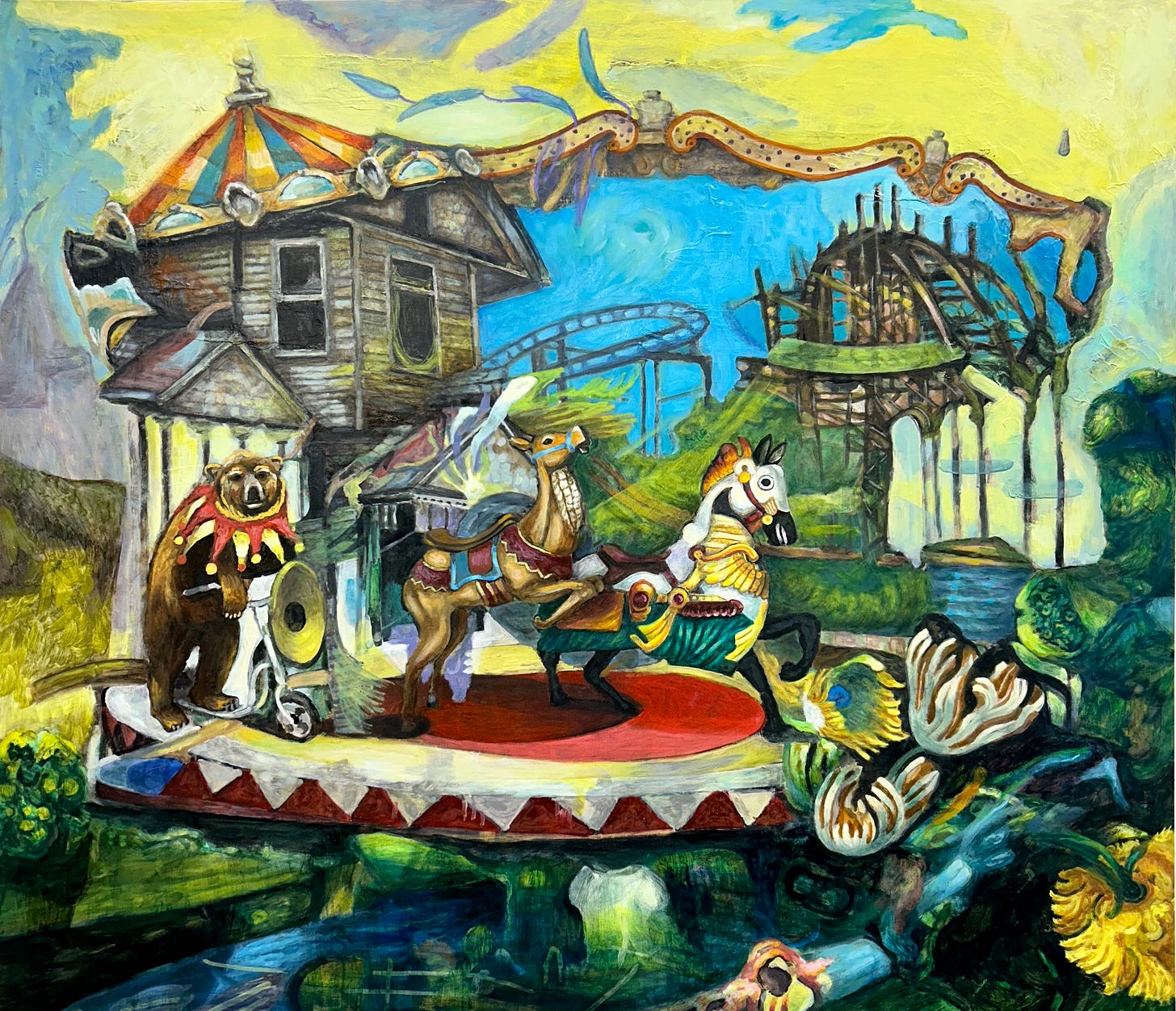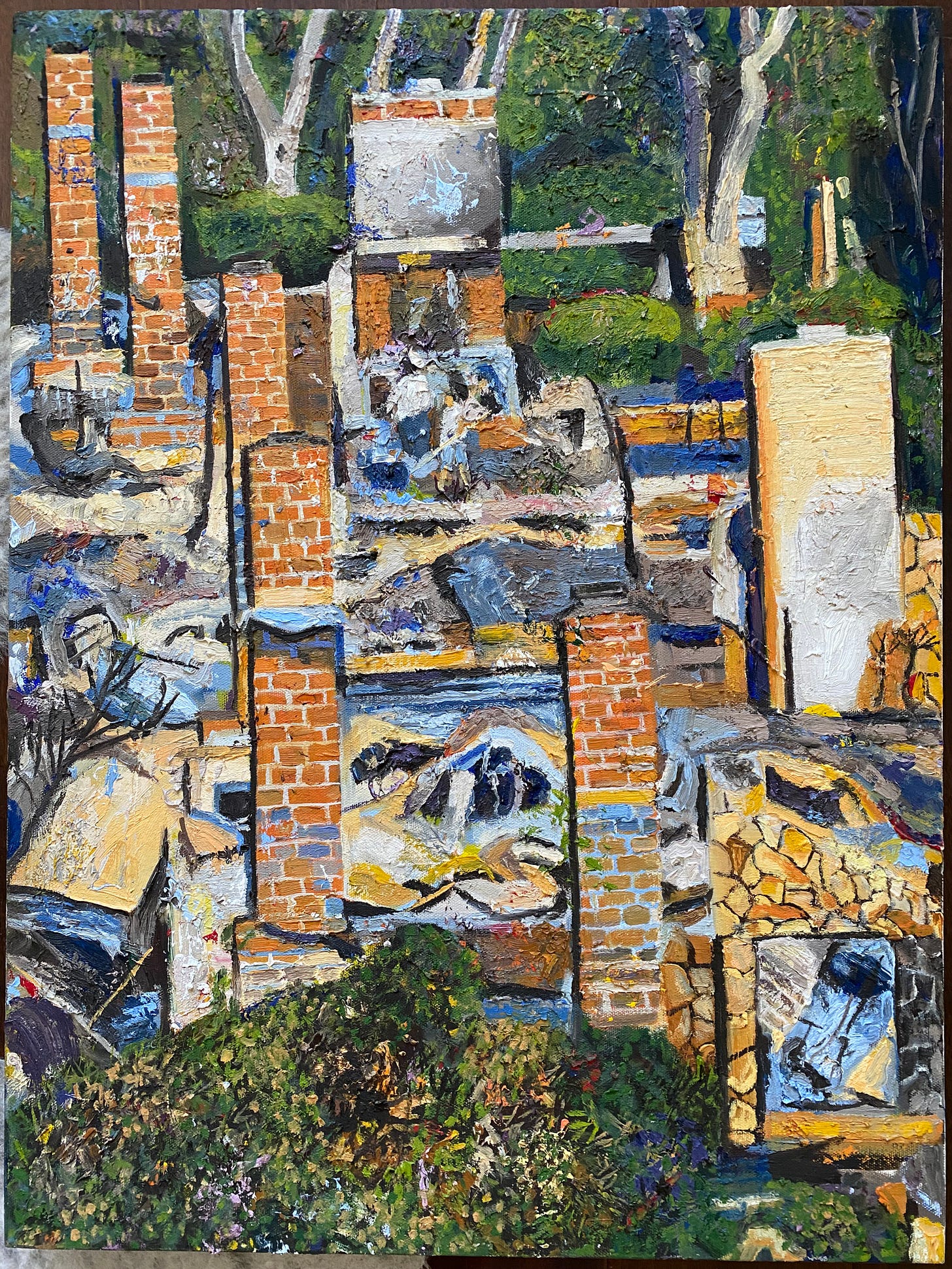How is the Weather?
Santa Ana Art Exhibition Depicts the Spoils of Climate Change Along With the Beauty of the Natural World
In our age of proliferating climate change, our State Department fired several staff members from its office for international climate policy, just one week after a violent storm drowned over 100 people in Texas on the Fourth of July.
During this time of draconian politics and weather-caused devastation, several dozen art pieces addressing climate change are being exhibited at the Orange County Center for Contemporary Art, Santa Ana, CA.
The paintings, drawings and sculptural pieces in “How is the Weather” present realistic, abstract and fantastic renditions of the spoils of climate change, and conversely on the beauty of our natural world. The show, juried by Shana Nys Dambrot, runs until August 23, 2025.
John Leben, “Tornado,” framed canvas print, 2025
John Leben’s computer-created print Tornado depicts five traditionally styled homes, unmoored from the land they were standing on. This dramatic scene illustrates contemporary versions of Dorothy’s home, which flew to a fantasy land in The Wizard of Oz. Yet his art piece is a fanciful illustration of the dislocation that so many feel during our country’s chaotic response to the continually worsening weather.
His paintings, he says, are serious explorations of the horrors of global warming that paradoxically make you smile. He describes his pictures as having otherworldly auras, along with “bold, painterly renderings using surrealistic imagery, fantasy and humor.”
Donnal Poppe, “Category Three,” mixed media, 2020
Perhaps the most dramatic piece in the show is Category Three, an assemblage sculpture depicting a two-story cabin, demolished by a devastating storm with tree limbs crashing into the roof and enveloping the home’s rooms.
Donnal Poppe explains, “The more violent storms that are now occurring more frequently are devastating large swaths of forests, fields, and homes. The devastating force of the storms make these structures look like doll houses hit by a temperamental child. Our homes can symbolize our family’s history and psyche, and their destruction can cause more harm than the just loss of a living space.”
Marie Thibeault, “Watch Duty,” oil on canvas, 2025
Marie Thibeault’s hybrid landscapes merge abstraction with representational figures, while employing bold use of color and unusual iconography. In her work, organic and industrial shapes are combined, many inspired by the Port of Los Angeles, near her San Pedro home.
Her studio work is dedicated to exploring the effects of environmental strain on the landscape. She creates large-scale paintings that blend complex abstraction with imagery of her nearby vistas that have been altered by climate-related trauma. While her work suggests eco-destruction amidst the natural environment, her completed paintings become exquisite, harmonious renderings, transcending the dystopian world that we inhabit.
Molly Enholm Velazco, “Desert Highway,” acrylic on unprimed canvas, 2020
For Molly Enholm Velazco, the landscape and concern for the delicate balance of the natural ecosystem are primary influences for her current paintings. Her work is based on recollections of shapes, patterns and natural formation from recent travels, from across the country and locally.
“Seeking to create a sense of resolution between opposing forces of calm and chaos,” she, “culls images from layered washes of paint and iridescent media built on the raw, unprimed weave of the canvas.” She describes this process as the ongoing art of negotiation, as the meditative action of painting offers her a way to reclaim the quiet moments of past journeys.
Jane Bauman, “Spring is Coming,” mixed media with acrylic and acrylic spray paint, 2023
Jane Bauman explains, “My latest body of work is paintings where I am having a conversation with myself, with my past art. The imagery is grounded in landscape, desire and the idea of plant intelligence. Some of these pieces begin as overspray sheets for other works and then painted with multiple layers of stencils and spray paint. The primary subject is plants and flowers—there’s so much mystery in the botanical world.”
Her painting in this show depicts the beauty of a rainstorm cascading over plant life—even as that storm is potentially destructive.
Cory Sewelson, “Ringmaster,” oil on panel, 2025
Of all art pieces in this show, Cory Sewelson’s is the most humorous, while providing a refreshing change from looking at devastation.
Before studying art in school, he pursued an interest in biology, reinforcing his connection to nature. Whether it was learning to scuba dive or having a job at Disneyland, creating animal and nature-based attractions, he deepened his appreciation for our natural environment.
Also from working at Disneyland, he learned that, “Theme parks share a purpose with circuses, fairs, midways, and carnivals, providing an alternate built space with simulated experiences all intended for escape” (perhaps into a magical world, away from environmental destruction). His humorous painting in this show is a manifestation of that perspective.
Mike "Ojos" Panasitti, “Tartaria,” oil on canvas, 2008
Mike Panasitti’s painting is based on a picture of an Oakland fire’s aftermath, which he clipped from a Los Angeles Times article. His painting title, he explains, is derived from a pseudohistorical theory claiming that a technologically-advanced civilization once spanned the globe. He adds that Tartaria’s flawless masoned cities, which he depicts in his expressive oil painting, were presumably able to generate free energy (to survive) after a catastrophic mud flood submerged the Empire. Its traces are still evident in historic architectural design, he says. “Mud floods sometimes occur after torrential rains fall on areas where fires have already left behind devastation,” he adds.
James B. Greenberg wrote in “What the Glaciers Are Telling Us,” for Substack, “We are past the point of asking whether the climate is changing. The question now is what kind of society we are becoming in response to it, and whether we will continue to deny the costs until they come for us directly, or act in solidarity with those who are already bearing them. The answer will shape not only the future of our environment, but the integrity of our political and moral lives.”

